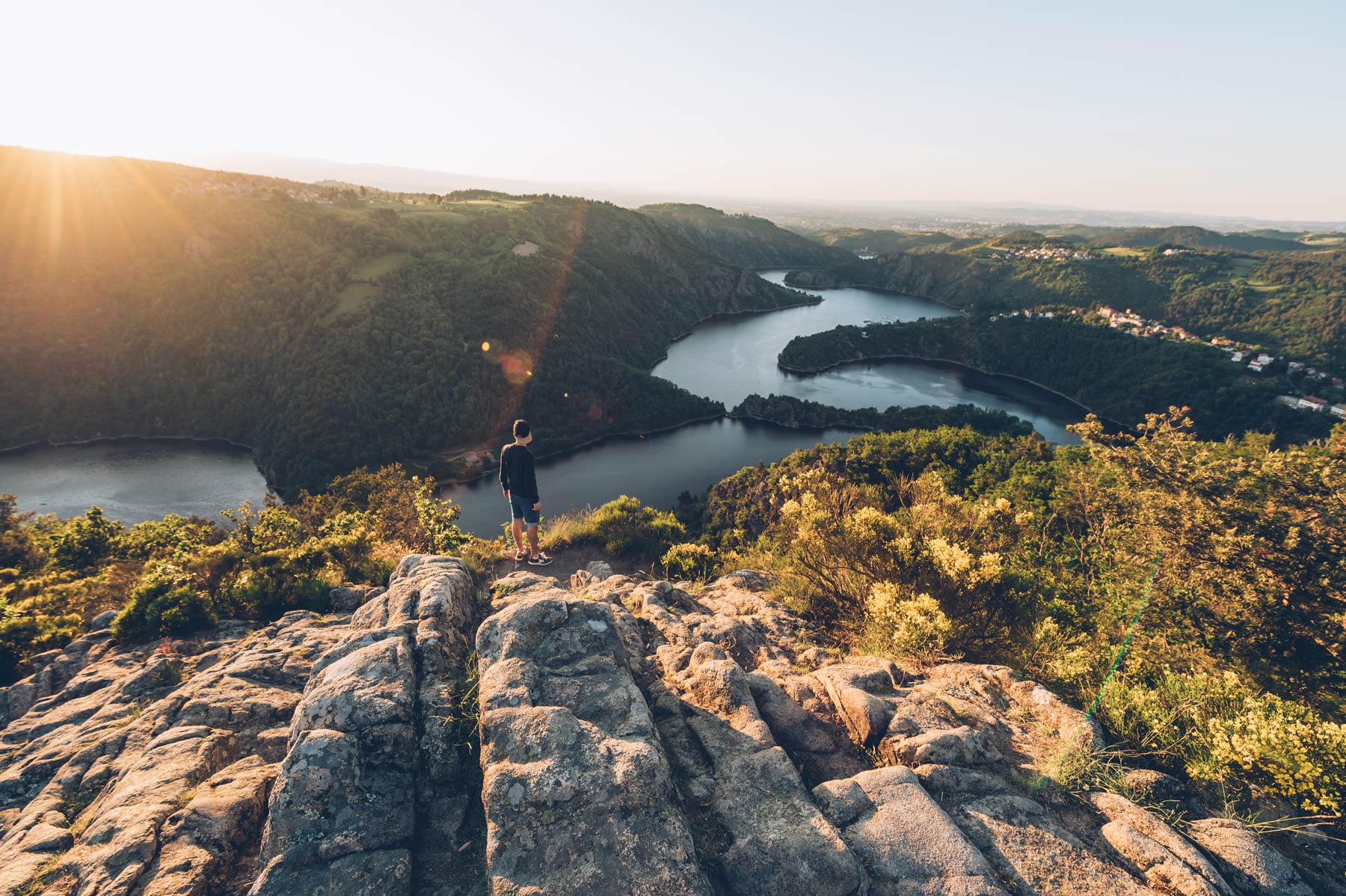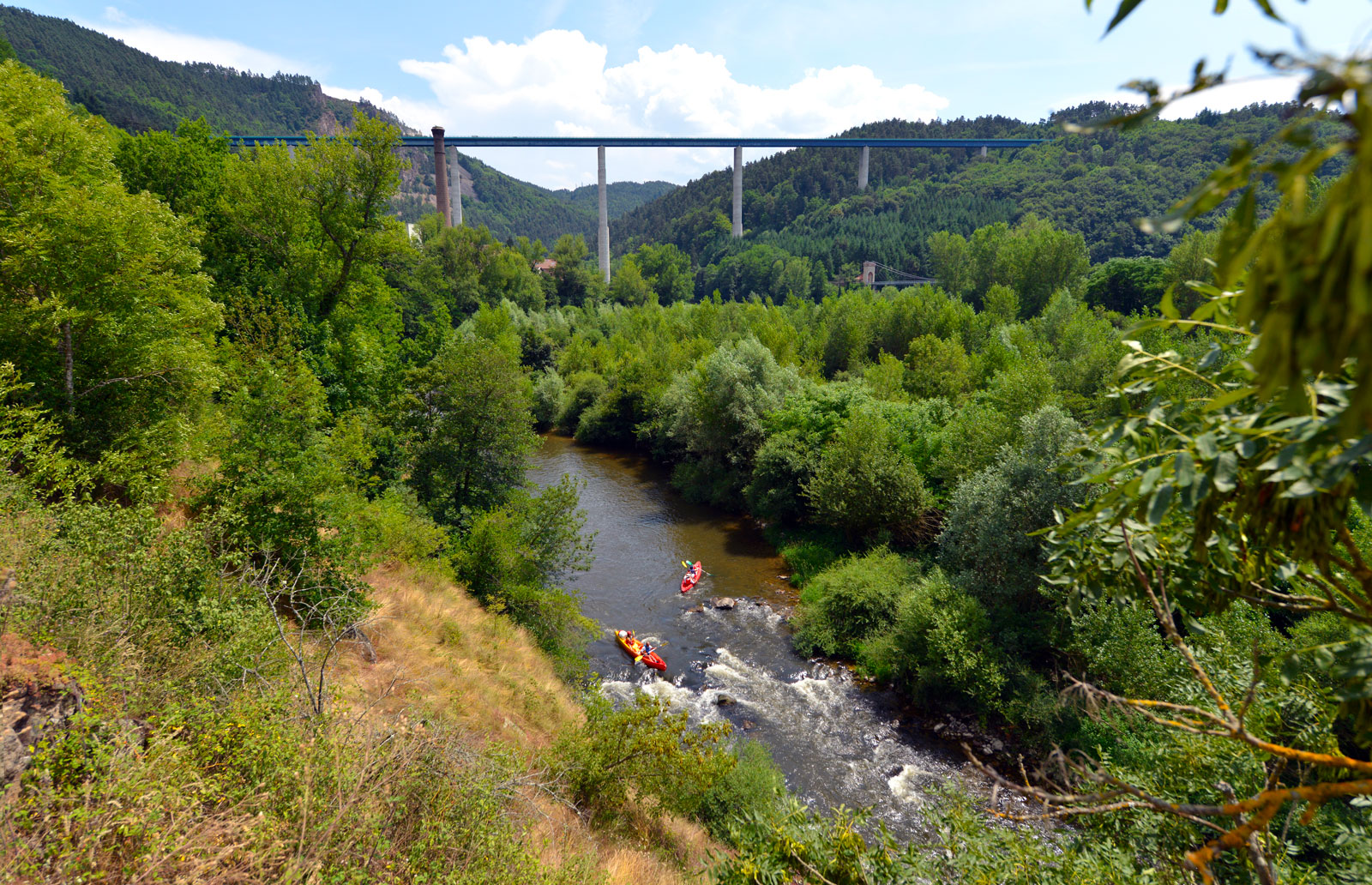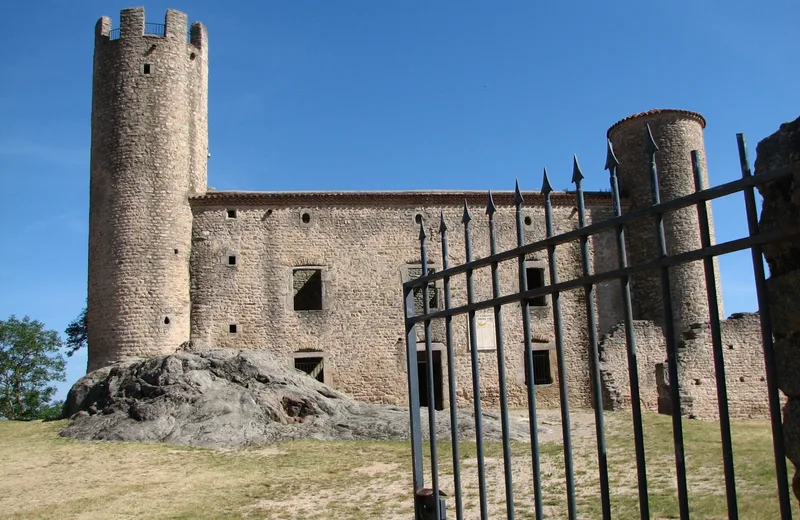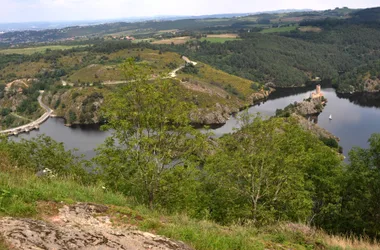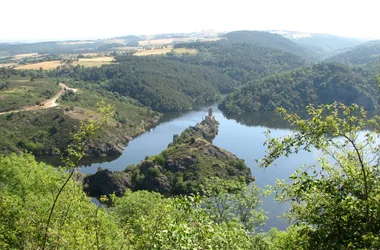Discovering the Château d'Essalois is worth it! Here is a forest walk to walk your family before playing princesses and knights.
Route details
Description
Overlooking the lake and the island of Grangent, the castle of Essalois looks great! Quoted from the 1580th century, the castle as it currently appears was built largely in XNUMX. This Renaissance castle, however, has a feudal aspect: the building was in particular restored in the XNUMXth century as one imagined at the time the castles of the Middle Ages.
In 2004, the last phases of restoration gave a glass roof to this castle which remains open to visitors free of charge every day! Generations of children have played knights and princesses in this unique place, a success that could make even the most authentic medieval ruins jealous...
Take the road taken by car on foot. At the first intersection, continue the road to the right for about 100 m.
Take the path that goes right (viewpoint on the left on Notre-Dame-de-Grâce). Go down the path in the forest and cross a first stream. Climb the path opposite among the Scots pines. At the first intersection, continue the path to the right.
Turn right to go down a forest path (viewpoint on the left over the Château d'Essalois). Cross a stream and go up the other side of the wooded valley. The path climbs steadily (do not cut corners). At the edge, continue straight on along the flat path to reach Essalois.
From the castle, follow the unpaved track southwards. Below on the left, the hamlet of Camaldules is located at the edge of the body of water: this private property is a former hermitage.
Continue the track (left after the bend, views of the port of Saint-Victor-sur-Loire, on the other side of the body of water) to reach the starting point.
This circuit goes around the Suc Pré (609 m altitude) where a Gallic oppidum stood from -170 to -25 BC. Held by segusiaves, this oppidum would have prospered until the establishment and competition of Roman cities in the Plaine du Forez. Excavations on this site, closed to visitors, have uncovered ceramics, iron or bronze objects and a large number of coins.
In 2004, the last phases of restoration gave a glass roof to this castle which remains open to visitors free of charge every day! Generations of children have played knights and princesses in this unique place, a success that could make even the most authentic medieval ruins jealous...
Take the road taken by car on foot. At the first intersection, continue the road to the right for about 100 m.
Take the path that goes right (viewpoint on the left on Notre-Dame-de-Grâce). Go down the path in the forest and cross a first stream. Climb the path opposite among the Scots pines. At the first intersection, continue the path to the right.
Turn right to go down a forest path (viewpoint on the left over the Château d'Essalois). Cross a stream and go up the other side of the wooded valley. The path climbs steadily (do not cut corners). At the edge, continue straight on along the flat path to reach Essalois.
From the castle, follow the unpaved track southwards. Below on the left, the hamlet of Camaldules is located at the edge of the body of water: this private property is a former hermitage.
Continue the track (left after the bend, views of the port of Saint-Victor-sur-Loire, on the other side of the body of water) to reach the starting point.
This circuit goes around the Suc Pré (609 m altitude) where a Gallic oppidum stood from -170 to -25 BC. Held by segusiaves, this oppidum would have prospered until the establishment and competition of Roman cities in the Plaine du Forez. Excavations on this site, closed to visitors, have uncovered ceramics, iron or bronze objects and a large number of coins.

